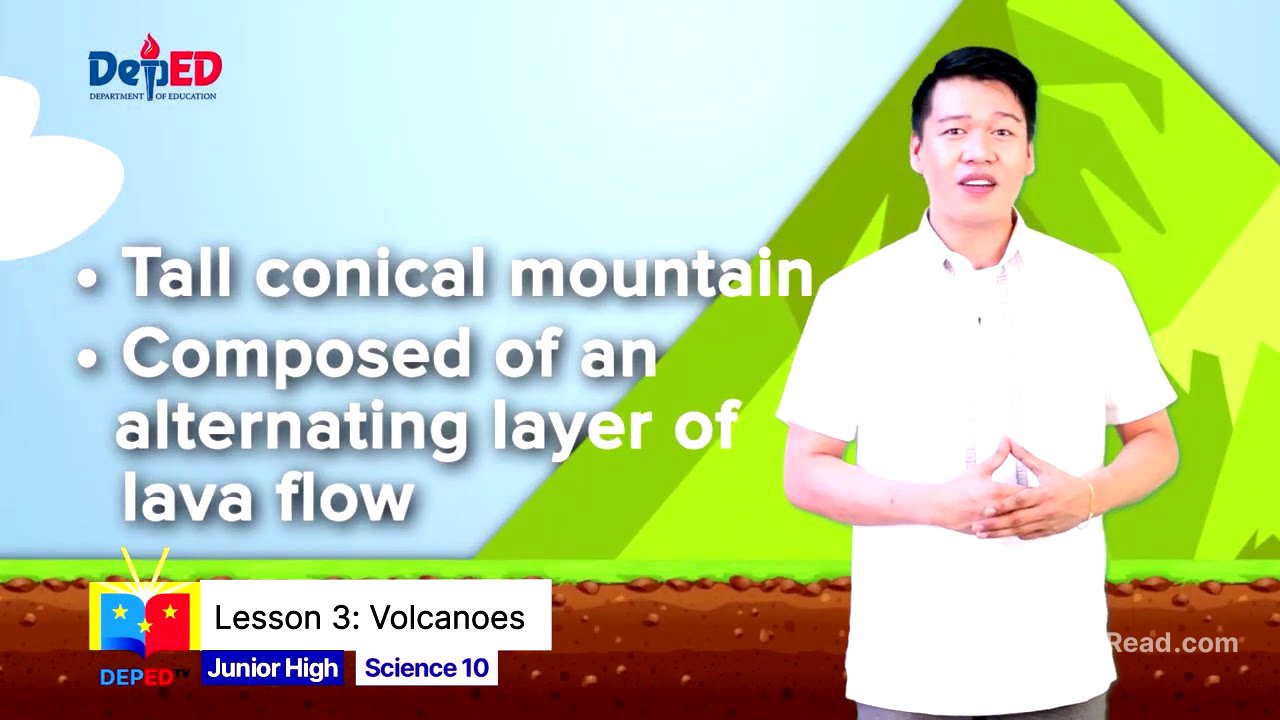TLDR;
This episode of Wonder Science focuses on volcanoes, their formation, types, and the risks associated with volcanic eruptions in the Philippines. It also includes safety tips for screen time, a review of the previous lesson on earthquakes, and a quiz to reinforce learning.
- Screen time healthy tips
- Volcanoes formation, types, and risks
- Volcanic Eruption Preparedness Plan assignment
Intro: Healthy Screen Time Tips [0:27]
The presenter shares five tips for maintaining health while using screens. These include sitting properly with back support, changing positions regularly, using dim lighting to prevent eye damage, stretching during breaks, and avoiding watching TV in bed to prevent neck and back pain.
Review of Previous Lesson: Earthquakes [1:51]
The episode starts with a quick review of the previous lesson about earthquakes, recalling that they are natural geological phenomena caused by the rapid movement of rock along faults. The release of energy from earthquakes results in seismic waves. The presenter also acknowledges students who posted landmarks from their cities using the hashtag #CertifiedWonderTraveler and earthquake preparedness plans using #WonderReady.
Interactive Game: Mystery Words [3:43]
An interactive game is introduced where viewers guess mystery words across five levels. The words revealed are cinder, shield, composite, inactive, and dormant. Participants are encouraged to write down the words and those who guess all five correctly earn a super badge.
Volcano Formation and Types [6:18]
The lesson transitions to the topic of volcanoes, explaining that the Philippines is located within the Pacific Ring of Fire, which accounts for the high volcanic activity in the region. Volcanoes form when tectonic plates diverge, allowing magma to ooze out, or when plates converge, causing one to subduct and melt, leading to volcano formation. The Philippine Institute of Volcanology and Seismology (PHIVOLCS) classifies volcanoes as active, potentially active (dormant), or inactive (extinct) based on their eruptive history. The three major types of volcanoes based on shape and structure are cinder cone, composite (or stratovolcanoes), and shield volcanoes.
Volcanic Risk in the Philippines [9:56]
The distribution of the 24 historically active volcanoes in the Philippines is discussed, noting that some provinces have no volcanoes and therefore no risk of volcanic eruptions. The Manila Observatory and the Department of Environment and Natural Resources have mapped the provinces most at risk, with Camiguin being ranked highest due to its small land area, followed by Sulu, which has the most active and potentially active volcanoes. Active volcanoes in Luzon include Mount Pinatubo, Taal, and Mount Mayon, while Mount Kanlaon is in the Visayas.
Taal Volcano Case Study [11:50]
Taal Volcano in Batangas is highlighted as an active volcano that had a phreatic eruption in January 2020. A phreatic eruption is a steam-driven event caused by water being heated by magma or hot rocks, while a phreatomagmatic eruption involves the violent mixing of magma and water. Later, the activity progressed into a magmatic eruption, characterized by the rise of magma. The volcanic explosivity index (VEI) is introduced as a scale to measure the relative explosiveness of volcanic eruptions. The 2020 Taal eruption reached a VEI of 3 to 4.
Science Pop Quiz [15:35]
A five-item quiz is conducted to test viewers' understanding of the material. The questions cover the types of volcanoes, the definitions of phreatic and phreatomagmatic eruptions, the province most at risk from volcanic eruptions, and the number of historically active volcanoes in the Philippines.
Assignment: Volcanic Eruption Preparedness Plan [18:57]
The episode concludes by emphasizing the importance of being aware of natural hazards like volcanic eruptions and preparing for them. The assignment is to create a preparedness plan for before, during, and after a volcanic eruption, to be shared on social media using the hashtag #WonderReady.



![‘세계 최초 금지법’까지 만들었는데...왜 미국·유럽처럼 안 바뀌는 거죠? [뉴스 쉽게보기]](https://wm-img.halpindev.com/p-briefread_c-10_b-10/urlb/aHR0cHM6Ly9pbWduZXdzLnBzdGF0aWMubmV0L2ltYWdlLzAwOS8yMDI1LzA5LzIxLzAwMDU1NjIxMzJfMDAxXzIwMjUwOTIxMTM1NDA3MjMyLnBuZz90eXBlPXc4MDA=.jpg)





